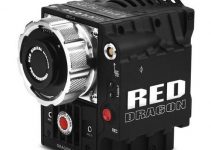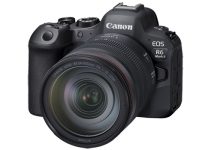With the recent release of its compact and portable Mavic PRO quadcopter, the leading drone and gimbal maker DJI continues to attract the attention of more and more filmmakers interested in aerial cinematography.
The availability of other popular models on the market, however, such as the Phantom 4, GoPro Karma, 3DR Solo, Xiaomi Mi, Walkera Runner 250, Yuneec Q500, etc. makes the drone conundrum for some a real nuisance as there are numerous aspects that need to be taken into consideration before anyone could make an informative buying decision.
The form factor, overall flying capabilities, images quality, extra features and affordability are only a small part of the equation. So, if you particularly want to see how the DJI Mavic compares to the Phantom 4, the following tests conducted by Korey Smith of My First Drone should be an excellent place to start with.
Even though the DJI Mavic is a lot smaller than the Phantom 4, the first test with the powerful leaf blower clearly shows that it holds up surprisingly well in the wind. Moreover, the Phantom tends to drift up much more than the Mavic Pro, especially in extreme winds. The video shot with the Mavic Pro, on the other hand, seems to be more jittery and shaky than the one captured on the Phantom 4. According to producers of the video, this result is mainly due to the narrower field-of-view of the DJI Mavic’s camera and the overall smaller factor of the drone itself.
For all pixel peepers out there, the image quality of the Mavic video is indeed a bit softer in comparison to the Phantom 4 when shooting in 4K, but this shortcoming can be easily fixed in post. As a rule, less sharpness means fewer artifacts and more forgiving images as a result, but if this aspect is an essential consideration for your workflow, then the Phantom 4 would be the better choice. Meanwhile, the narrower field of view of the Mavic’s camera allows moving the camera in multiple directions including pointing up when hovering without seeing the propellers in your frame, which is another big selling point for some users.
In terms of low-light performance, both drones can go up to ISO 3200 with a small advantage of the Phantom 4 in that regard, but if you want to avoid further complications in post, try not to go past ISO 800 on both quadcopters. Also, bear in mind that unlike the Phantom 4, the Mavic’s camera doesn’t have a fixed focus. In other words, you need to tap what part of the image you want to be in focus in the DJI Go App while flying the Mavic. Even though this could be a handy feature to have in some situations, it takes some time and practise to master it while flying.
Regarding portability, the DJI Mavic is the absolute winner as it’s merely 1/6th the size of its bigger sibling which makes it extremely convenient when you need to travel with it predominantly, but if you need better image quality and more robust form factor, then the Phantom 4 would be a more reasonable choice. Currently, the Phantom 4 sells for $1,199, whereas the DJI Mavic Pro can be pre-ordered for $999.
[source: My First Drone]
B&H Order Links:
Disclaimer: As an Amazon Associate partner and participant in B&H and Adorama Affiliate programmes, we earn a small comission from each purchase made through the affiliate links listed above at no additional cost to you.




While shooting with the Mavic, did you press the screen on the remote to focus?
Of course, it was! It’s expressly written in the video’s description.
whats the bit rate between the the 2 drones?
Same… 60mbit